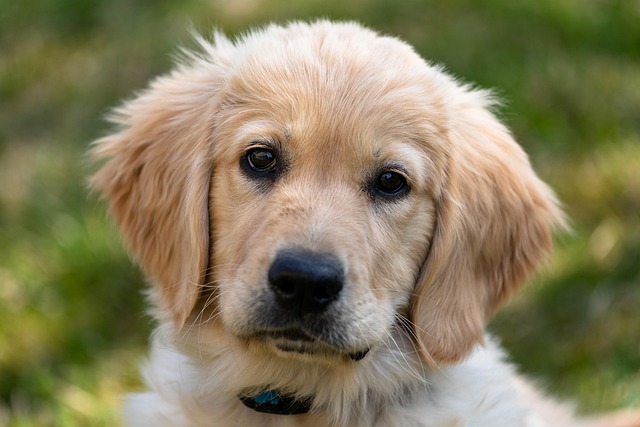
How can I tell if my dog's heatstroke is serious
Let’s be real: It’s a sticky August morning in Los Angeles, and you took your 2-year-old Golden Retriever, Max, for a walk a little later than usual
I knelt with my friend Sarah in her Austin, Texas apartment living room last weekend, her 1-year-old Poodle mix, Gus, hiding under the couch as she held up a set of clippers—its cord coiled, blade still in the packaging. “The groomer said his paws need trimming, but he panics at the sound. How do I groom my dog at home with clippers without scaring him?” Sarah asked, pressing the power button (Gus yelped and buried his face deeper). If you’re a new U.S. dog owner staring at a skittish pup and a pile of grooming tools, at-home clipping is doable—you just need to turn the “scary machine” into something your dog associates with treats, not fear.
To understand why dogs hate clippers, let’s break down their instincts. Clippers make high-pitched humming noises that trigger a dog’s sensitive hearing (far sharper than ours) and their blades feel cold, unfamiliar, and even “threatening” against skin. Sarah’s vet explained Gus’s fear wasn’t stubbornness—it was his brain saying, “This thing is loud and weird, get away.” Forcing a dog into clipping (like Sarah almost did by pulling Gus out from under the couch) violates U.S. animal welfare standards; it turns grooming into trauma instead of bonding. Positive reinforcement—linking clippers to snacks and praise—is the only way to build trust.

Here’s how to groom your dog at home with clippers, step by step, using Sarah’s breakthrough with Gus: First, desensitize to the clippers (days before trimming). Sarah laid the clippers on the floor with a bowl of freeze-dried chicken treats next to them. Every time Gus sniffed the clippers, she tossed him a treat. After two days, she turned the clippers on low while feeding him treats—starting 6 feet away, then moving closer as he stayed calm. By day three, he’d nudge the running clippers for snacks. This “sound training” is non-negotiable; skip it, and clipping will always be a fight. Second, prep tools and space (apartment-friendly hacks). She used a cordless clipper (quieter than corded ones, great for small spaces) with a #30 blade (safe for paws, won’t cut skin) and laid a towel on the coffee table (Gus’s favorite spot, more comfortable than the floor). She also had a “jackpot reward” bag—extra-tasty liver treats—for good behavior. Third, trim slow, start with easy spots. She began with Gus’s paws (the goal) but first practiced on his shoulder (a less sensitive area). She held his paw gently (never tight!) and ran the clipper in the direction of hair growth—short, light strokes, pausing to give a treat after each. When he squirmed, she stopped, gave a treat, and tried again—no scolding. By the end, he sat still for all four paws. Fourth, avoid “danger zones” (for beginners). She skipped his face, ears, and belly—those need a groomer’s steady hand. Stick to paws, legs, and the base of the tail until you’re confident.
For apartment living, manage noise and mess: Trim during daytime hours (avoid disturbing neighbors with evening clipping) and lay a lint roller nearby to clean up loose fur (Houston fines $175 for leaving pet hair in shared hallways). After trimming, take your pup for a walk—carry two essentials: biodegradable poop bags (mandatory everywhere) and a small brush (quick touch-ups if fur gets messy on the way). Practice community etiquette: If a neighbor asks about your dog’s neat paws, say “Took lots of treats, but we did it!”—new owners love relatable tips. Never skip vet checkups: Sarah’s vet showed her how to adjust the clipper blade (she had it too tight!) and confirmed Gus’s rabies vaccine was up to date (required nationwide)—vets can spot skin issues during trim checks, but they need current shots to advise on grooming tools.
A week later, Sarah texted me a photo: Gus sitting on the coffee table, letting her run the clippers over his paw, tail wagging as he chewed a treat. How to groom your dog at home with clippers? For Gus, it was slow desensitization, lots of snacks, and no rush. For your pup, it’s not about perfect trims—it’s about building trust so clipping feels like a game, not a chore. With patience, you’ll both get the hang of it.

Let’s be real: It’s a sticky August morning in Los Angeles, and you took your 2-year-old Golden Retriever, Max, for a walk a little later than usual

You're enjoying a summer afternoon at the park when you notice your dog has stopped panting and appears disoriented - their gums are bright red

Let’s paint the picture: You’re in your Denver apartment, watching your 4-year-old Boston Terrier, Ruby, plop down mid-play session with her favorite toy

Many dog owners notice their pets nails seem shorter after regular walks,but how much does this daily activity actually help?The answer depends on where you walk—concrete sidewalks or asphalt streets gently file nails as a dog's paws hit the ground

Most dog owners notice their pup scooting across the carpet at some point, but few connect it to impacted anal glands. These small sacs near a dog’s rectum secrete a scent for marking territory

Most vets agree that regular dog teeth cleaning is key to avoiding painful dental issues later. For healthy adult dogs, a professional cleaning at the vet’s office every 12 to 18 months usually works well.